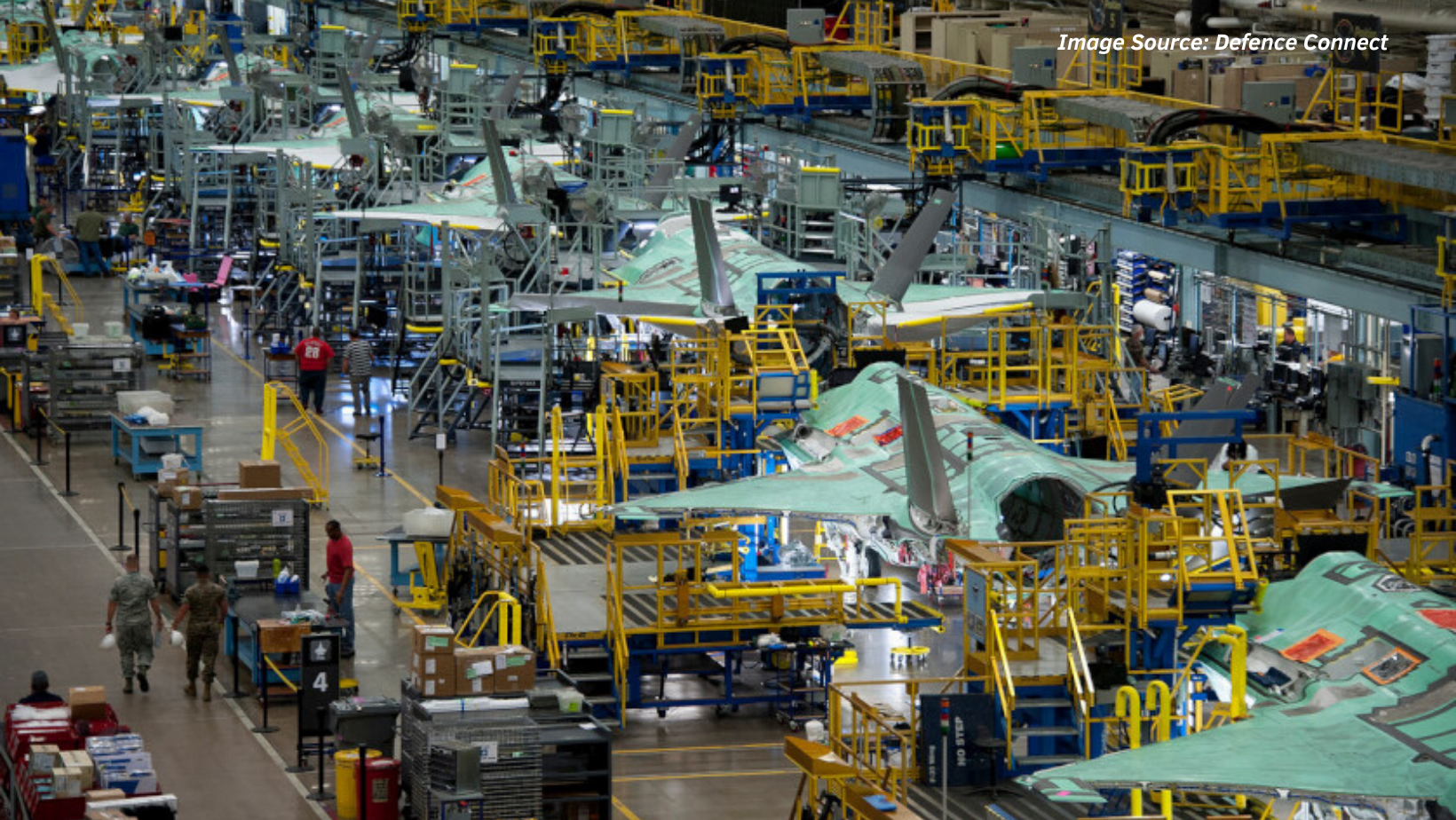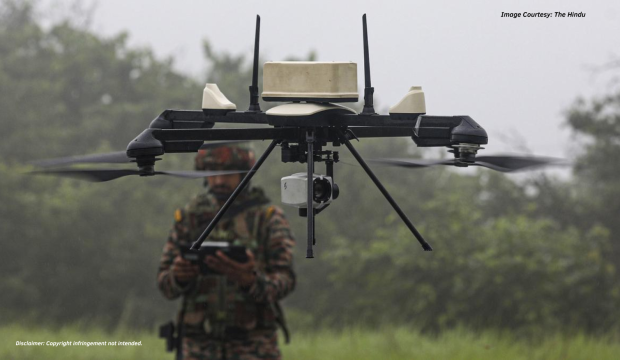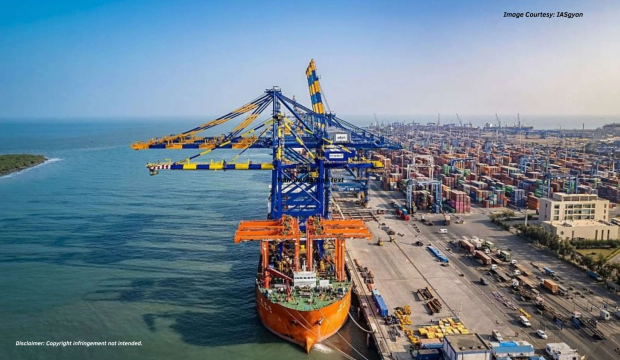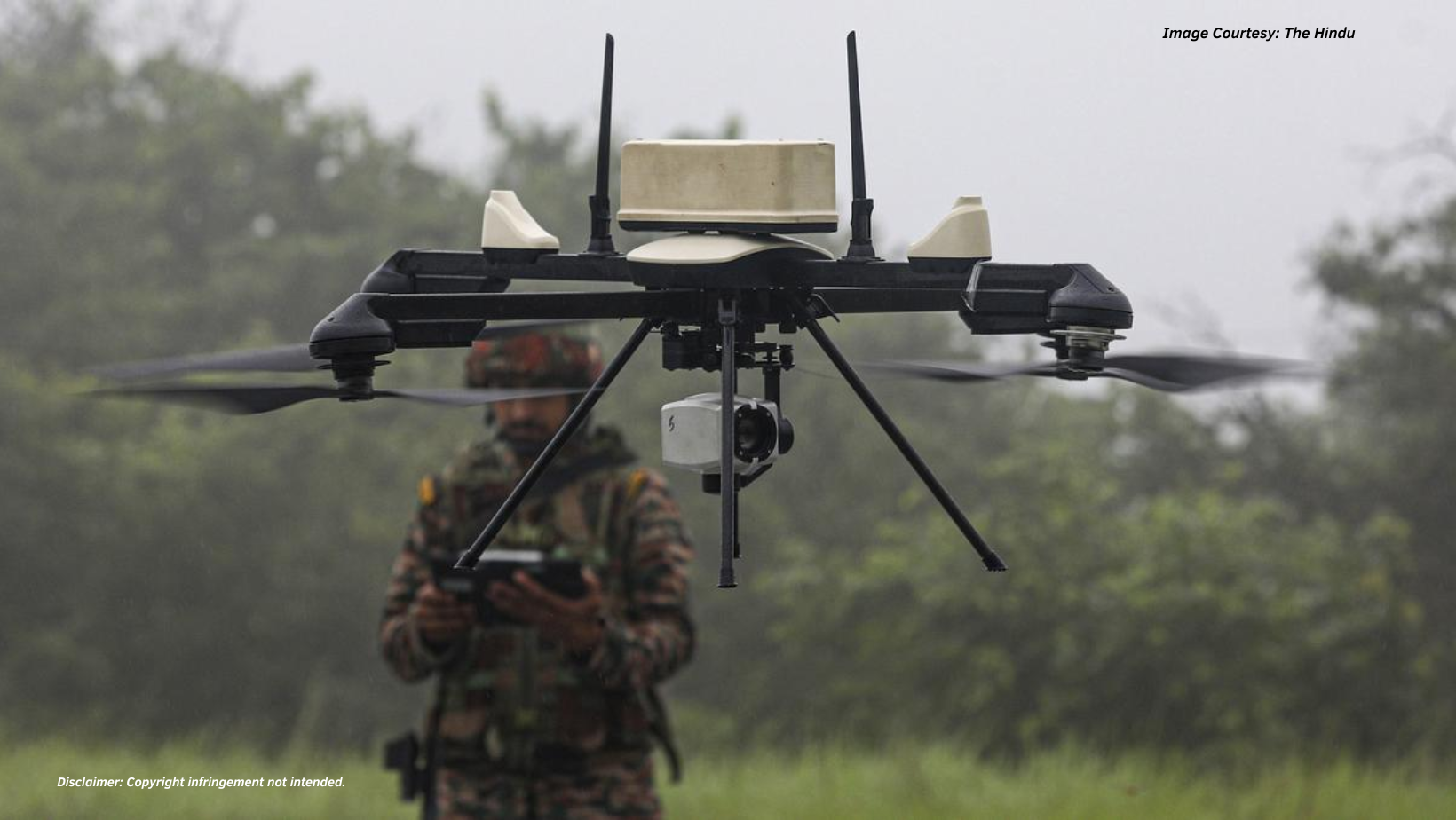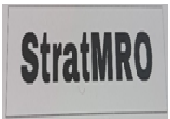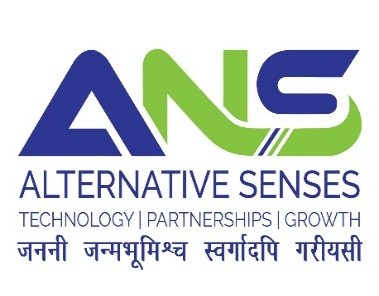Introduction
The Indian defence sector faces significant regulatory, institutional, and cultural obstacles that plague a military industrial complex. For the foreseeable future, India’ security environment will continue to remain challenging as its adversaries continue to build offensive military capabilities. Therefore, the ability of India to achieve self-sufficiency in terms of development of cutting-edge defence hardware and technology to meet the needs of its armed forces would be vital.
Stakeholders in Defence Manufacturing
There are four stakeholders; the defence forces who need latest weaponry, the DPSUs and the Ordnance Factories now regrouped into seven government owned corporate entities, the private sector desirous of venturing into the defence production industry and lastly the academia including the DRDO and IITs who are supposed to carryout R&D and manage technological development, in the defence sector. The Government itself forms a major driver of these initiatives, as the ultimate responsibility of national security lies with the government and hence also of the capability development of defence forces.
Efforts towards Self-Reliance
‘Make in India’ and Atmanirbhar Bharat are significant national initiatives of the Government of India, designed to achieve overall national self-reliance. This program’s main objective is to encourage foreign investment and support India’s manufacturing industry. Since the beginning of this historic programme, the Indian government has undertaken a number of reform initiatives to foster a supportive environment for the manufacturing sector, with defence manufacture topping the list of priorities. It is hence relevant to assess effectiveness of these initiatives, in the domains of policy reforms, structural reforms and technological reforms, towards self-sufficiency in defence capability.
Policy Reforms
DAP – 2020.
The DAP-2020 has made a Number of changes in policy framework, procurement categories and incentives to MSMEs, support to innovations etc to provide boost to defence manufacturing. Though, all these initiatives promote indigenisation, at the core of it, they aim to promote R&D and skill set which will help in establishing own help in absorption of technology and hence its import.
- Policy Framework
Three major changes over DPP-2016 have been introduced; Firstly, “Forced Indigenisation”, by placing embargo on items identified as positively indigenised (eg – LCA Tejas Mk IA) and also placing a future embargo to provide adequate time to develop capability in the given timeframe (LCAM import being banned in Dec 2025). List of such positively indigenised items with timelines is being updated regularly. Secondly, emphasised use of AI, indigenous military materials, software, aero engines and silicon wafers. Thirdly, planning process has been changed to shorter time frames which will help in realistic planning and giving the industry correct picture of forces requirement to plan in advance.
- Procurement Categories and Indigenised Content.
DAP 2020 has introduced various options for indigenisation. The Buy and Make has been replaced by Buy (Global – Manufacture in India), Make has been split into three categories Make-I, II, III and innovation. However, Buy (Indian) and Buy (Indian-IDDM) and, Buy and Make (Indian) and SP Model could have been clubbed being similar in intent and to avoid confusion.
- Leasing
The Leasing category can help experience the technology real time and can help in ascertaining its usefulness for further development. - Offset Guidelines
The Offset guidelines have been revamped. It seems to have taken cognizance of the fact that the Offsets cost more with no substantial plough back into the system. Hence, Offset from all single vendor cases including G2G deals and Foreign Military Sales have been removed. The offsets now focusses more on technology, investment and export of major platforms and not components as earlier. Offset banking has been removed.
- Foreign Direct Investment (FDI)
In May 2020, Govt announced increase in FDI in defence Sector to 74% from erstwhile 49% under the automatic route and 100% with government sanctions. The limit on FDI cap serves well to safeguard the interests of Indian Vendors and also provides the OEMs space to venture into Defence Manufacturing in India. But, somewhere it may fall short on the target of ToT since with low stakes, the OEMs may not share with their IP rights, as has been the case till now.
- Offset Guidelines
The Offset guidelines have been revamped. It seems to have taken cognizance of the fact that the Offsets cost more with no substantial plough back into the system. Hence, Offset from all single vendor cases including G2G deals and Foreign Military Sales have been removed. The offsets now focusses more on technology, investment and export of major platforms and not components as earlier. Offset banking has been removed.
- Mandatory Indigenous Procurement
Budget 2022 has mandated 68% indigenous procurement out of the allocated defence budget, which is akin to a purchase assurance provided the suppliers meet the desired QRs
- Exports
The Government has recognised the need to venture into defence exports and has prepared a Draft Defence Production and Exports Promotion Policy to boost defence exports.
Structural Reforms
- Dedicated Acquisition Cadre
DAP 2020 has made a start by providing for institutionalised training of personnel both in India and abroad. However, a lot in terms of cadre strength and training needs to be done. This will help gain requisite knowledge in the field of procurement and acquisitions so as to gain maximum from the contracts.
- Defence Industrial Corridors (DICs)
The two DICs will establish Common Facility Centres, Centres of Excellence and Skill Development Centres, technology transfer facilitation centres, to facilitate in providing best practices, research and development and skill development. These DICs provide an excellent opportunity for OEMs to manufacture in India, utilising the cheap factors of production and unprecedented government support which will be a win-win situation for both the parties.
Corporatisation of OFBs
Based on the recommendation of various committees, the 41 OFBs have been corporatized into seven entities which will revitalise them by adding accountability and making them compete in open environment. This will foster better R&D and technology absorption capability.
Technological Reforms
- Ways to Acquire Technology
Both, R&D and Transfer of Technology are the need of the hour and need to complement each other ie a given level of technological threshold to absorb the technology and use it for indigenisation, and in the process enhance own potential to further develop the technology/innovate, as purely indigenous. Hence Transfer of Technology, if successful, will prove to be a game changer.
- Issues with Research & Development in India
Despite the monopoly over technology and product development, DRDO has performed sub-optimally on all accounts; time and cost overruns, failure to develop niche technologies especially major components and assemblies has pushed the country back by decades in defence manufacturing. The reasons for the same are, the lack of organisational reforms, responsibility without accountability, meagre resources and poor human resource management. The poor work culture has led to brain drain. Also, the technology today is changing at a very fast pace, rendering the product design, development and effective lifecycle very less, which entails development of technology at paces faster than the rate of obsolescence and additional monetary implications, dimensions we grossly lack in.
- Transfer of Technology – Ways and Means
There are multiple ways which can be utilised to acquire technology. The main options are through offsets / licensed production / sub contract manufacturing. However, the concern still remains that the ToT should not remain limited to fabrication ie “Know-how”, assembly and repair services since companies don’t share their “Know-Why”.
- Joint Ventures
The examples are JV with Russia for Brahmos Missile, a huge success, however such is not a trend. Hence, the need to promote own R&D in some specific areas we have advantage in like ship building and aerospace, which we can offer in exchange for technology we are interested in.
- Strategic Partnership Model
The Strategic partnership model envisages selection of a Indian private company to partner with foreign OEMs for acquisition of Fighter Aircrafts, Helicopters, Submarines and AFVs initially. For each project only one entity will be selected. The SP company must be owned by resident Indians ie 51% stake. This model implemented based on recommendations of Dhirendra Singh Committee, would provide private sector a big opportunity to a part in big projects. However, the model also has some concerns; firstly, the lack of institutional mechanism to guide to drive the new process and secondly, the long term viability of the SPs if they are not given a level playing field with the DPSUs.
- Degree of Complexity in Transfer of Technology
The technology transfer procedures are one of the most complex issues of the subject under consideration. The issues which are required to be considered include relevance – currency – depth of technology, cost of global technology transfer as well as availability of adequate technology base and skilled manpower to handle the same in India, as also the industrial returns likely to be earned by bringing in the technology.
It is fairly evident that the last few years have witnessed numerous positive stroke in planning and structural reforms to promote defence manufacturing in India. India has a large talent pool of technical graduates and large R&D laboratories and defence industries in Government Sector, in addition to the private sector aspiring to play a pivotal role. However, major issues that remain are availability of technology and willingness of OEMs to play along with the push by the government.
Research Methodology
A three pronged approach was adopted to assess the effectiveness of the reforms as listed below :-
- In-depth interview of experts.
- Case-study of South Korea, China and Israel models of Defence Manufacturing to determine best practices.
- Case Studies of India’s defence exports and India as a technological hub, based on secondary data.
Detailed Analysis of Themes of Interviews.
The opinion and perception of Subject Matter Experts (SMEs) as analysed brings out the genesis of the problem and also gives insights about the subject as under:-
- Need for faster decision making
Defence manufacturing and procurement being a long gestation process which requires a number of channels to be passed, it is recommended by the SMEs that the the process can be made efficient with faster decision making. Towards the same, it is brought out that there exists a need to identify critical requirements of armed forces and the same needs to be collaborated with the industry for early realisation.
- Time delay taken for procurement
The entire procurement procedure is lengthy for its full completion which is repeated numerous times from its start point due to technical flaws in the system.
- Reduce bureaucracy in procedures
While it is essential to follow probity in procurement, the same needs to be cautioned against the red tapism
- DPSUs being given special treatment
This in long term has led to the stagnation in R&D by pvt players as well as lower initiative in certain key requirements of the armed forces.
- Need to increase R&D expenditure
The R&D expenditure globally ranges up to 4.8% in case of Israel. However, India has the same as low as <1% of GDP. With assured and continued funding along with talent pool absorption policies, the same will flourish within India as well.
- Business relationship cell by Armed Forces
To reduce the disconnect between the requirements of armed forces and the capability development vision of pvt industry, it is necessary to have regular interaction amongst two stakeholders on critical issues. The same can be formalised through est of Business Relationship Cells by armed forces at suitable level (preferred at Corps HQ level) for real time basis update of upcoming requirements of the forces.
- Design steps to reach the desired milestones
To achieve the same, the selection process itself need to have the capability and capacity clause with distinct timelines laid down for the intended product delivery.
- Adequate capability in domestic sector
Domestic sector has adequate capability existing to absorb niche technology. The SPM route is preferred way to make fast progress in the technical domain. Simultaneously, the efforts in R&D for sustained period will build in house technical base as well. To achieve the same, there is a need to attract talent and make R&D as a lucrative career option overall.
- Lack of capacity – Need for identifying core competencies to build.
The longterm ailing factor of defence industry in India is the large scale manufacturing capacity. The same cannot be built overnight. However, once the core competencies are finalised by the government, the capability of the industry can be leveraged to build the capacity in selected core areas for export oriented growth.
Secondary Data Analysis: Case Studies of India’s Defence Exports and India as a Technological Hub
- Need for faster decision making
In the Financial Year 2021–22 (FY22), India’s defence exports increased to Rs 13,000 crore. 70% of these exports were produced by private sector businesses. The opposite of the coin, though, is less exciting that the majority of the exported commodities included “parts & components.”. With occasional big-ticket deals like the Rs 2,770 crore BrahMoS supersonic missile export contract to the Philippines, cannot expect to become a major player in the export market by exporting parts and components. It would be incorrect to think that streamlining the export process, which has been the government’s top focus, is sufficient to increase export. What is required is an objective evaluation of the current rules and practises, but more significantly, a plan for marketing made-in-India defence products that will appeal to nations with significant financial resources to import defence products from India.
- Making India A Technological Hub
The Four Ds—Data, Digitization, Digitalization, and Disruption—define the New Tech World Order. The time is right to strengthen the Industrial Fabric of India, with global ambitions, against the backdrop of a strong technological base provided by ISRO, DRDO, Technology and innovation centres of industries and PSUs, Startups, and T Hubs, through a well-thought-out technology strategy and the plethora of targeted initiatives, some of which are listed as below
- The Low-Hanging Technology Fruits
In the next five years, the worldwide market for unmanned autonomous systems (drones and robots) is expected to reach over $50 billion. Does India need to lead in this low-hanging fruit sector? Megatrends in emerging technology include AI, AR, VR, meta, IoT, Big Data Analytics, Blockchain, EVs, software-defined networks, emerging technology stacks, and chip fabrication, to mention a few. To that extent, a user-friendly export policy would need to be redesigned for regional producers, including MSMEs and international recipients. India’s capability growth and capacity building must become critically dependent on industrial corridors. The manufacturing sector in India must be regarded as a high-quality organisation by the international competition.
- Corporate Professional Responsibility (CPR).
The establishment of a “Corporate Professional Responsibility” (CPR), “Technology Development Fund” under the Companies Act 2013 as a national effort for technology development will be in the best interest of the Atmanirbharta. In practise, this fund would be similar to the Corporate Social Responsibility (CSR) fund and would consist of about 2% of the company’s revenue and profit margins. The CPR must provide funding for industrial houses-based technological incubation centres, hubs, and start-ups under the direction of designated subject-matter experts.
- Creating A Defence MSME And Start Ups Portal
Alongwith supporting thousands of MSMEs and start-ups, it is urgently necessary to establish direct contact between these MSMEs and start-ups and the military. It is now necessary to gather information on the products that MSME and Start-Up companies are launching, developing, or still planning to develop and make it accessible to the military through a web portal called “Defence MSME and Start-up Portal” (DMSP) with all fast track processes to support the same.
Models of Other nations
The study of defence industry set up of three select countries brought out certain key take aways as listed below : –
- South Korea : Government Support To Pvt Industry
The government has backed the South Korean defence sector through a number of programmes and policies, most of which have been in place since the 1990s. Since the late 1990s, the ROK has placed an increasing emphasis on purchasing goods that were designed and manufactured domestically. The process of defence industry growth has also been indirectly impacted by the DRP. Defence industry has shifted away from production through imitation and reverse engineering and has increased its reliance on indigenous development and in-house R&D in response to the government’s and the ROK armed forces’ needs for better and more sophisticated weapons platforms. The DRP 2020 also requires a focus on purchasing equipment that is based on domestic R&D and production within the nation. Government designates defence contracts and contractors, who are therefore legally entitled to several privileges and subsidies. After a contract has been granted, the government guarantees that it will purchase the goods once they have been produced and put together. As a result of the Korean government’s institutional assurance of supply and demand, the defence sector is greatly encouraged to continue output.
- China: Dual R&D
China has two different approaches to the development of innovation. The first is the high-volume, low-cost version(s) of foreign items that can be produced and fielded in huge numbers using an economical, “good enough” method. Although they are less effective and of lower quality, they are nonetheless less expensive and satisfy PLA requirements. The second is the “gold-plated,” high-end strategy to creating sophisticated weapons that are comparable to those of advanced nations. Given that the Chinese defence sector now lacks the scientific and technological capacity to carry out higher-end innovation, this is a long-term approach. Nevertheless, research into increasingly sophisticated developing technologies and weaponry, such as directed energy laser weapons, robotic systems, and tiny nano-based systems, is being conducted by Chinese defence science and technology institutes.
- Israel: R&D and Talent Pool Creation
Israel relies on a human capital-intensive growth strategy, which is seen from its educational system and its access to facilities that offer top-notch instruction. In terms of a percentage of GDP, Israel spends the most on research and development (4.2% of GDP). Israel’s high-tech industry, particularly the military manufacturing sector where approximately 75% of the weaponry are produced, employ a very inventive group of scientists and engineers. As a result, the development of new technologies in the global arms market has been greatly accelerated by the defence industry.
Findings and Recommendations
India Today stands at such a unique position that it could support both domestic and export demands through vibrant local defence industry, thus yielding tremendous benefits to the nation and the defence sector as well. The Atmanirbhar Bharat and Make in India campaigns are the correct steps towards revitalising the defence industry. While India undertakes this journey, it is essential that we learn from the countries which adopted similar model to enhance domestic defence industry. The lessons along with India specific recommendations have been summarised in succeeding paragraphs.
- Choose Core Competence Capabilities
India need to identify its own strategic needs and operational requirements in specific so as to make explicit choices towards developing core competencies and manufacturing capabilities within the domestic defence ecosystem. The same can be done through vision document spanning next two decades under the overall guidance of national security strategy.
- Fast paced capacity building
For the chosen capability development, the manufacturing capacities need to be developed with the aim to be the worldwide production hub of the selected core competencies. To achieve the same there may be requirement to revise the DP form the specific domains as well as fast tracking the development.
- Simplification of the procedure
The very volume of the DAP 2020 is a non-starter for anyone who wishes to comprehend the procedure. While it may include all possible procedures, there is effort required to simplify the text to a more user friendly format. It is to be appreciated that the procedure is the sole reference for the industry to seek clarifications.
- Reduction of number of agencies involved
The number of agencies involved and associated red tape is another cause of concern. A procedure where one single agency becomes the interface for the vendor and further be held responsible for the delays in the actions by the plethora of other agencies presently being dealt with will greatly enhance the confidence and reliability factor.
- Basis for Indigenous content check
The current system of cost being the basis of indigenous check may be replaced with technology content to boost the requisite indigenisation.
- Accountability of delays
Delay on part of the procurement agency be made transparent and accountable so as to reduce the cost overheads for the vendor
- Assurance of orders for Indian firms
Considering that Defence research and development and further production is a cost and time intensive process, adequate assurance to the Indian vendors is essential. While the negative list is a welcome step towards indigenisation, the flexibility of the procurement agency to buy from a Foreign OEM citing service contingencies leaves the industry apprehensive.
- Creation of a level playing field
The inherent bias in the procurement from DPSU requires to be completely stubbed. While it is appreciable that their sustenance is also a factor for the Govt to consider, their consideration as a development agency defeats the purpose of promoting MSMEs. Hence, they should be exclusively dealt on their tech capability and clubbed with the private sector.
- Development of Private Sector.
For the development of mutual trust, it is essential to create an even playing field for the private sector, DPSUs, and OFB. A few initiatives in this respect are mentioned below:-
- Shared Long Term Vision, Infrastructures, Efforts and Responsibilities
The private secotor lacks the access to government plans which in turns hinders the initiatives being taken by private players, purely for a constant fear of sunk cost. The same can be alleyed by sharing long term vision of technological progress envisaged as a country.For the long-term production of defence products, all facilities, both public and private, should be shared by everyone and should be considered a national resource. At all levels, public-private partnerships should be promoted. Private businesses should be able to use the research facilities and labs built with government funding and R &D. The already-produced equipment from the commercial sector should be approved for testing, and if it satisfies the standards for quality, it should be purchased. It is also necessary to replace the fear of failure among the private sector with the prospect of success. We must set up an everlasting arbitration cell whose decisions are final and not subject to review in order to settle nearly all disputes. When the government is able to allay worries over FDI, IPR, investor protection, land acquisition, licencing challenges, and taxation regime, ease of doing business in India would be realised.
- Develop Complementary Sectors
We should simultaneously create a number of ancillary industries, such as communication alloys, composites, components, precision engineering goods, etc., to develop the defence sector. It will take a lot of effort to advance in areas like metallurgy and alloys. Lack of a solid supply chain for logistics and suitable infrastructure drives up logistics expenses and lowers cost optimization and efficiency. In order to reduce costs, a defence manufacturing must have a good supply chain.
- Confidence in Indian products
A mindset change in the procurement agency towards the quality of Indian products will be the biggest leverage point towards indigenisation. This can be built by exposing more personnel to the Defence Expos held as also increasing the number of Expos. It is essential to hold the Expos at various locations rather than restricting to the HQs.
- Policy Framework.
The DAP alone cannot be the sole harbinger of change in indigenisation. It is hence essential that inadequacies in our policy framework towards support of the vendor base impacting indigenisation. More subsidies are required to be given to MSMEs. Measures taken by the Govt to ease the Foreign OEMs engagement with Indian Defence firms is bound to boost indigenisation.
- Environment Shaping
More mechanisms to keep the vendor base informed about future procurements. The present TPCR does not give a clear image for the industry to plan for their future research and development as well as production.
- Integrate Military ICDP with Niti Aayog vision
Integration of defence plans with an overarching national can be overcome by jointly working out the modality of integration, especially if the deadline is to be met. A joint task force needs to be set up immediately to resolve several contentious issues, ranging from the basis of defence planning to execution of plans, and come up with a workable model for integration.
Conclusion
The steps initiated by Government in defence sector are certainly a positive step towards realising the dream of ‘Self Reliance’ or ‘Atmanirbhar Bharat’. While there will always be differing views amongst stake holders, the same is essential to contribute constructively towards the overall improvement and subsequent revisions. Certain factors would require further pursuance while there will be a need to undertake a critical review of others for their existence.
DISCLAIMER
The paper is author’s individual scholastic articulation and does not necessarily reflect the views of CENJOWS. The author certifies that the article is original in content, unpublished and it has not been submitted for publication/ web upload elsewhere and that the facts and figures quoted are duly referenced, as needed and are believed to be correct.


